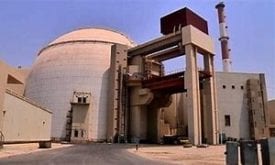Al-Monitor – Iran’s Supreme Leader Ayatollah Ali Khamenei permitted on April 6 the administration of President Hassan Rouhani to withdraw 1 billion euros ($1.1 billion) from Iran’s National Development Fund to address the negative economic impact of the coronavirus outbreak. The move comes after weeks of disbelief in the government’s circle and passivity in dealing with the economic impact of the pandemic.
Not since the time of the Iran-Iraq War have Iranians experienced such a volume of death and sorrow. On the same day, Kianoush Jahanpour, spokesman for the Ministry of Health, told reporters that there were 60,500 cases of the coronavirus in the country. As of April 10, the number of confirmed cases reached 68,192 and 4,232 deaths were recorded. It is not just the lives that are lost, but the livelihoods. More and more Iranians have to choose between trying not to get sick or earning a living. If traffic is any indication, the number of cars on the highways of Tehran after the Iranian new year holidays showed that Iranians have chosen to return to work. Even if every health-care professional in Iran is advising them to stay indoors, the Iranian government has decided not to force Iranians to take shelter in their homes. Instead of barring Iranians from leaving their homes, Rouhani told his Cabinet that economic activities are to resume on April 11 across the country, and on April 18 in the province of Tehran, the most inhabited region in Iran.
The pandemic has not spared Iran’s economy. Like attacking a victim with pre-existing conditions, the virus that causes COVID-19 has left a lethal impact on Iran’s economy, which is already suffering from high inflation, high unemployment, sanctions, mismanagement and widespread corruption. The Iranian economy simply does not have the resources to help Iranians protect themselves during this pandemic. The Iranian government has lost significant oil revenues as a result of the US sanctions. Iranian businesses cannot endure more losses after bearing the cost of sanctions and the government’s mismanagement of the economy. Many Iranians are sharing the news of suddenly losing their jobs on social networks. Many businesses have closed their doors, not renewing contracts with their employees. A new wave of unemployment is expected, while many wonder if their communities can go through another series of economic hardships.
The government has left much to be desired in its first response to the economic impact of the coronavirus. Like any other economic crisis, the government’s first reaction was to blame sanctions imposed by the United States. However, Iran needed and needs hospital beds and ventilators. Blaming sanctions would not provide relief. The government felt the need to take action. It did so, not recognizing the actual size of the unfolding economic crisis.
On March 12, Rouhani announced that the government would provide 3 million Iranian households with welfare packages to help them with the negative impact of the economic slowdown following the spread of the virus. He promised to offer government assistance to 4 million low-income families if the budget is allocated. That was the key — the government did not have any money to help vulnerable Iranians. On the very same day, Iran requested $5 billion from the International Monetary Fund (IMF) through its Rapid Financing Instrument citing the economic conditions caused by the pandemic. However, the process proved lengthy, and the IMF is yet to approve any transfer to Iran. The United States also opposed the request saying Iran has enough funds at its disposal, and arguing it would use the money to “fund its adventurism abroad, not to buy medicine for Iranians,” according to a statement to Al-Monitor’s Bryant Harris from the State Department. US law also requires that Washington oppose proposed assistance to Tehran as it is designated a state sponsor of terrorism. Thus, it is unlikely Iran will receive anything from the IMF.
Rouhani had no other choice but to request permission from Khamenei on March 26 to use 1 billion euros from the Fund for National Development, a trust fund established to save oil revenues for a rainy day. In 2012, it was reported that the fund would have $55 billion by March 2013. Later in 2015, it was claimed that the fund had surpassed $80 billion. However, no one knows precisely how much money is left in the account from a total of $618 billion in oil revenues, which Iran earned from 2005 to 2013, before internationally imposed sanctions. Facing sanctions and other barriers in finding external resources, the Iranian government settled for about one-fifth of what it had initially asked of the IMF.
In the 11 days between Rouhani’s request and Khamenei’s approval, the economic reality of Iran kept changing. It became apparent that Iran’s struggling private sector would bear the brunt of the economic cost of the pandemic. The government announced that it would make available $5 billion in low-interest rate loans to the struggling businesses. It has also increased the funding for unemployment insurance by another $300 million.
In the meantime, 50 Iranian economists took upon themselves to write an open letter to the president proposing a stimulus package for the economy. They suggested the government allocate $5 billion to provide low-income families with 1 million tomans (or about $70) per member of the household in credit card loans, which they can use in chain department stores to buy necessities. The government will deduct these loans after a six-month breathing period from families’ cash subsidies in 12 monthly installments. Signatories of the open letter have also urged the government to provide businesses with immediate access to funds to prevent unemployment from increasing any further. They also asked for $650 million to boast the health-care sector.
While the economists meant to address negative demand and supply shocks, the government has seen an opportunity to provide Iranians with some relief and to score some political points. First, the governor of the Central Bank of Iran, Abdolnasser Hemmati, welcomed the idea, urging the banks to participate in the program. Rouhani has made a point of publicly advocating for “1 million for every Iranian.” He is making calls to speed up the cash payouts, according to the website of the president’s office. The amount is not much, but it would mean a lot to many Iranian families. Still, the Iranian economy needs much more to get through the coming months. No one doubts that such programs will increase the inflation in the economy, reducing the average Iranian family’s shopping power further.
The economic impact of the coronavirus pandemic in Iran is yet to be determined. Many part-time workers and hourly wage earners have already lost their jobs. The pandemic interrupted holiday season shopping, costing shopkeepers and small distributors immensely. At the same time, sanctions and widespread corruption have made Iranians and the Iranian economy more vulnerable than other economies to the crisis. Iranian authorities claim that because of the sanctions, there had not been enough funding to expand health-care coverage. However, the directors of hospitals complain of a lack of resources and funding to care for COVID-19 patients in the existing facilities. The director of one provincial hospital went as far as claiming that he cannot feed the patients.
If sanctions have denied Iran the necessary funds, a dysfunctioning bureaucracy has reduced the effectiveness of available resources significantly. One billion euros would disappear quickly in corridors of the labyrinth, which is the Iranian government decision-making process. The coronavirus is not planning to go anywhere anytime soon. Iranians have no other choice but to go back to work in the midst of a global pandemic to earn a living, while their economy continues to shrink.Found in:COVID-19, CORONAVIRUS, US SANCTIONS ON IRAN, ALI KHAMENEI, IRANIAN ECONOMY, HASSAN ROUHANI, HEALTH CARE, FINANCIAL ASSISTANCE
Ali Dadpay is a professor of economics at St. Edward’s University in Austin, Texas, where he focuses on commercial aviation among other things. A regular contributor on economic affairs for the past two decades in Iranian media, his analytical pieces have appeared in Donya-e-Eghtesad, Tejarat Farda, Financial Tribune Daily and Farheekhtegan.
 Shabtabnews In this dark night, I have lost my way – Arise from a corner, oh you the star of guidance.
Shabtabnews In this dark night, I have lost my way – Arise from a corner, oh you the star of guidance.


